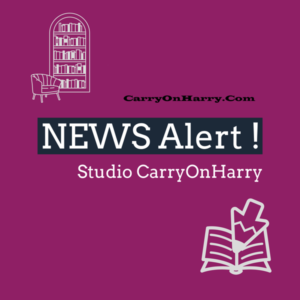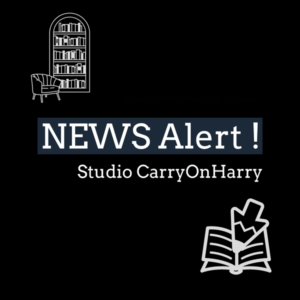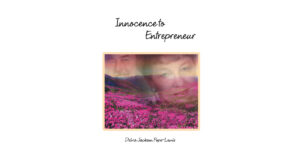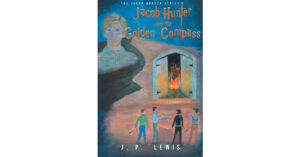Interviews
Book Talks with Author Lewis Crow | New Book Release The Lone Captain
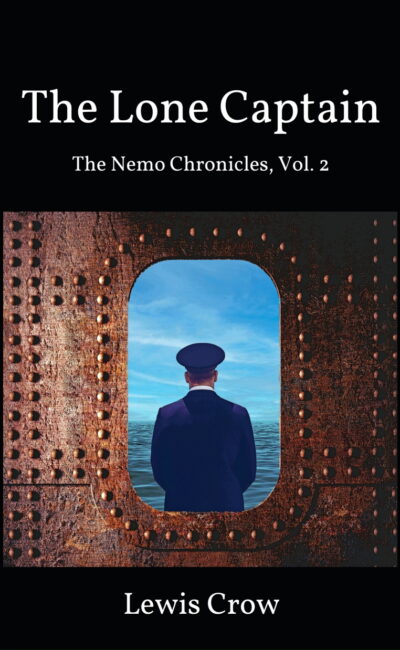
Studio Carry On Harry [ Interviews with Authors ] Book Talks with Author Lewis Crow. Occasion being his New Book Release “The Lone Captain‘” . Today in this interview session he is about to introduce his book to us and shares his experience as an author. He is also going to share his writing process and will share some tips for new authors .
About You and Your background ?
I grew up as an only child who was blessed with a vivid imagination. Television was a large influence on me, and I used to make up stories for my stuffed animals and action figures. For as long as I can remember I have been fascinated with ships. I built scores of ship models and insatiably researched the histories of famous and not-so-famous vessels as well as the wars in which they fought. As the son of a World War II veteran, that conflict held special interest for me.
How much does your life influences your story telling and the characters that you bring to life ?
My life has been fairly ordinary, so it doesn’t offer me much to draw from. It’s the movies, TV shows, and books which have fired my imagination that influence my storytelling far more than the events of life: the pure adventure of Star Wars and Twenty Thousand Leagues Under the Sea; the ensemble characters of the Star Trek franchise; the intricate plots of the Mission: Impossible TV series; the striking visuals and not-so-happy endings of Miami Vice; the compelling plotting and wild stories of Clive Cussler. All these have shaped my plots and characters.
Title Of Your New Release
The Lone Captain
What is the central theme of book ?
Probably something like, living your destiny can come with great rewards—and great costs.
Where did the idea came from ? How much did you tweak it ? Your Initial planning and analysis of final stuff ?
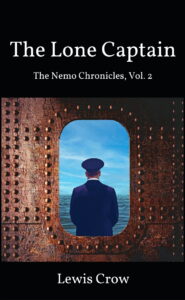 The Lone Captain, the sequel to The Nautilus Legacy, is Book 2 of The Nemo Chronicles Trilogy. The idea came from my desire to see the story of Jules Verne’s Captain Nemo and his wonderful submarine Nautilus continue. After plotting out a timeline that harmonized with the one in Verne’s two Nemo novels (Twenty Thousand Leagues Under the Sea and Mysterious Island) and was true to the world he made, I created a way for the submarine to be resurrected by Nemo’s son. New voyage and adventure ideas followed as I researched the history of that era and the topography of the oceans. Looking back now, nearly 30 years after writing the first draft, I see that I only had to make minor revisions to the story. The final version turned out to be a stronger version of what I began with, but the basic story remained unchanged.
The Lone Captain, the sequel to The Nautilus Legacy, is Book 2 of The Nemo Chronicles Trilogy. The idea came from my desire to see the story of Jules Verne’s Captain Nemo and his wonderful submarine Nautilus continue. After plotting out a timeline that harmonized with the one in Verne’s two Nemo novels (Twenty Thousand Leagues Under the Sea and Mysterious Island) and was true to the world he made, I created a way for the submarine to be resurrected by Nemo’s son. New voyage and adventure ideas followed as I researched the history of that era and the topography of the oceans. Looking back now, nearly 30 years after writing the first draft, I see that I only had to make minor revisions to the story. The final version turned out to be a stronger version of what I began with, but the basic story remained unchanged.
How much are you playing in the book as one of your characters ? Do you ever hide behind shades of your characters ?
Certainly there are some aspects of my Nemo that are reflective of my own personality—intelligence, imagination, sense of family, and strong belief in his principles. Just as a child contains elements of both parents, this character is a fusion of his parents—Verne’s Nemo and me. I don’t normally hide myself in what I write. I prefer to let characters just naturally take on aspects of my makeup when needed.
what is difficult to write Goodness Of Character / Evil Intentions. What do you enjoy most out of developing them ?
Since most people are a mixture of good and bad, I think evil intentions are the most challenging to write. The reasons they are evil must be believable, and that’s hard to do convincingly. Otherwise, you end up with one-dimensional caricatures. Many actors have stated that it’s more fun to play evil characters, and I do get a certain kick out of putting a real “bad guy” into the story now and then. Perhaps most challenging is when the evil is something inside the “good” protagonist himself. That’s a notion I’m working on in another story I’m in the process of revising.
Do you structure the flow of story in beginning itself or you improvise ? In your idea what is good to have before you hit a road block ?
I definitely try to structure the story in advance while still allowing some room for spur-of-the-moment ideas to come up as I’m writing. A written outline is wonderful to have for reference. The best thing to have before hitting a roadblock? From experience I would say a bank of extra plot ideas or story arcs. It’s always better to write more than you need, as opposed to scrambling to come up with enough ideas to fill the book.
How many books have you written and how different is new book ? Difference is in which specific area ?
The Lone Captain is my second published book. It is a continuation of the first, but whereas the first was largely an “origin story” if you will, this one is a full slate of adventures with the core characters already introduced and fleshed out. It’s where things really hit their stride. I initially toyed with the idea of making them one long book, but as I wrote there seemed to be a natural stopping point between the two.
Which Character do you like most and why . Any real life inspiration ? Do you ever wish to meet this character in real life ?
My favorite character in The Lone Captain is Eileen Meagher. She is alluring and mysterious, and I think I fell in love with her when I wrote the story. I based her appearance on British singer Kate Bush—her mane of dark hair, her big eyes and milky complexion. I would love to have met her at some point in my life, but nowadays my wife would doubtless take a dim view of such an idea!
Why will you recommend this book to readers ?
It has several points of appeal—part adventure, part history lesson, part undersea travelogue, part science education, part Victorian love story. I’d like to think fans of Jules Verne-style stories would welcome it.
How do you deal with Negative Feedbacks ? How do you stay balanced with Positive Feed back ?
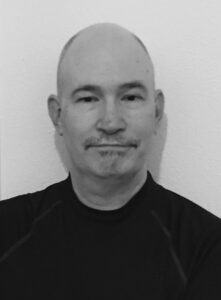 Negative feedback always stings. I’ve never handled criticism well, and I tend to take it personally. I’m trying to remind myself that not every story is for every reader, just as not every type of music is for every music fan. Each thing (hopefully) finds its audience. Someone once said if you don’t believe the bad reviews, you shouldn’t believe the good ones, either. Mainly I just try to be true to my vision for the story and please myself.
Negative feedback always stings. I’ve never handled criticism well, and I tend to take it personally. I’m trying to remind myself that not every story is for every reader, just as not every type of music is for every music fan. Each thing (hopefully) finds its audience. Someone once said if you don’t believe the bad reviews, you shouldn’t believe the good ones, either. Mainly I just try to be true to my vision for the story and please myself.
Have you already started working on next book ? What is on your mind for it ?
I’m currently working on two things: a light science fiction novella about a writer in an emotional crisis and the third/final volume of The Nemo Chronicles.
Any good tips you would like to share for new aspiring authors apart from saying just start the book ?
Learn how to mercilessly edit your own stuff. The more surgery you can do by yourself, the less it will hurt when someone else does it.
How did you hear about CarryOnHarry ? Any message for Studio ? Any Suggestion that we can make it better ?
I saw a posting in a book promotion Facebook group. I hope this interview meets your requirements. Thank you for the opportunity to participate.
Amazon / Book Purchase Link
Your Official Website
https://lrcrow.wixsite.com/nemo
Facebook Handle
https://www.facebook.com/lewis.crow.792
Interviews
podcasting microphone
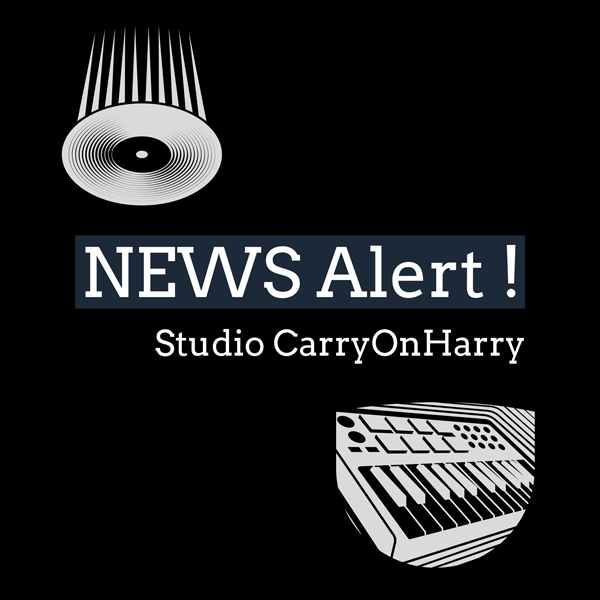
Understanding Podcasting Microphones: An In-Depth Guide for Beginners and Professionals
Types of Podcasting Microphones
Dynamic Microphones
Dynamic microphones are the most popular choice for podcasting. They convert sound into electrical signals using a diaphragm, coil, and magnet. These microphones are robust, can handle high sound pressure levels, and require less gain than other types. This makes them excellent for capturing voices in less-than-ideal acoustic environments. The Shure SM7B and the Electro-Voice RE20 are industry standards among podcasters.
Condenser Microphones
Condenser microphones are sensitive and tend to capture a wider frequency range compared to dynamic microphones. They require phantom power to operate and are ideal for capturing subtle vocal nuances, making them great for voice work in studios. Notable condenser microphones include the Audio-Technica AT2020 and the Rode NT1-A, both widely admired for their clarity and depth.
Lavalier Microphones
Lavalier microphones, or lapel mics, are small, clip-on devices ideal for interviews and on-the-go recording. They ensure hands-free operations and are particularly useful for video podcasts. Wireless options add flexibility, allowing hosts to move freely during recordings. Popular choices include the Rode SmartLav+ and the Sennheiser ME 2-II.
USB Microphones
For those looking for simplicity and convenience, USB microphones are perfect. They connect directly to a computer without the need for additional equipment. While they may not deliver the same quality as XLR microphones, models like the Blue Yeti and the Audio-Technica ATR2100x-USB are excellent for beginners and home podcasters.
Important Features of Podcast Microphones
Frequency Response
Frequency response defines how a microphone reacts to different sound frequencies. Most voices fall within the 80Hz to 15kHz range, so a good podcasting microphone should adequately capture this spectrum. A flat frequency response is usually preferable, allowing for a more natural sound.
Polar Patterns
The polar pattern of a microphone determines its sensitivity in various directions. The most commonly used patterns are:
- Cardioid: Ideal for podcasting as it captures sound from the front while minimizing background noise.
- Omnidirectional: Captures sound from all directions, useful for roundtable discussions but picks up more ambient noise.
- Bidirectional: Captures sound from the front and rear, suitable for interviews between two people.
Sensitivity and Sound Pressure Level (SPL)
Sensitivity measures how effectively a microphone converts sound into an electrical signal. A higher sensitivity microphone captures softer sounds without requiring additional gain. Sound pressure level (SPL) measures how loud of a sound the microphone can handle without distortion. Choosing a mic with appropriate SPL ratings is crucial, especially in louder environments.
Essential Accessories for Podcasting Microphones
Pop Filters
Pop filters reduce plosive sounds (like “p” and “b” sounds) that can cause distortion. They are typically made of a screen or foam, which diffuses rapidly moving air before it hits the microphone diaphragm.
Microphone Stands and Boom Arms
Proper positioning is critical for optimal audio capture. Microphone stands and boom arms allow podcasters to adjust their microphone’s position easily while keeping hands free for notes or gestures.
Shock Mounts
Shock mounts prevent vibrations and handling noise from reaching the microphone, ensuring cleaner recordings. They are especially useful when recording in less controlled environments.
Audio Interfaces
For those using XLR microphones, an audio interface is necessary to convert the analog signal into digital for your computer. Popular models include the Focusrite Scarlett 2i2 and the PreSonus AudioBox USB, which provide excellent sound quality and ease of use.
Tips for Choosing the Right Microphone
Define Your Needs
Consider your podcasting style. Are you recording solo, interviews, or panel discussions? The type of conversations you have will dictate your microphone choice.
Budget Considerations
While it’s easy to get carried away with high-end equipment, plenty of budget-friendly microphones offer excellent quality. Determine a budget that allows for good quality without breaking the bank.
Test Before You Buy
Whenever possible, test microphones in-store to find the sound that best suits your voice. Listening to the audio capture can significantly influence your decision.
Read Reviews and Watch Tutorials
Before investing, check online reviews and tutorials. Many YouTube channels offer in-depth sound tests and comparisons to help you make informed choices.
Maintenance and Care for Podcasting Microphones
To extend the lifespan of your microphone, regular maintenance is vital. Here are some key maintenance tips:
- Keep it Clean: Dust and saliva can accumulate and affect sound quality. Use a soft cloth to wipe down your microphone regularly.
- Use Windscreens: For outdoor recording, use a windscreen to prevent wind interference and protect the mic from moisture.
- Store Properly: When not in use, store your microphone in a protective case to prevent physical damage.
Enhancing Your Podcasting Experience
Investing in a good microphone is just the beginning. To fully get the most out of your podcasting experience, include thorough planning, effective editing software, and quality recording space. An acoustically treated room, for example, can significantly reduce background noise and enhance vocal clarity.
Understanding the nuances of podcasting microphones will empower you to make informed decisions that improve your production quality. Armed with the right microphone and accessories, you can deliver a rich audio experience, engage your audience, and elevate your podcasting journey to new heights.
Interviews
Veteran actor Manoj Bajpayee speaks out against the growing influence of PR in Bollywood

From the BalleBalleRadio Entertainment Desk
Manoj Bajpayee, a celebrated actor known for his powerful performances, has recently voiced his concerns regarding the pervasive influence of PR machinery within Bollywood. Bajpayee argues that the industry’s increasing focus on public relations often overshadows genuine acting talent, leading to a skewed perception of success and merit.
Bajpayee’s comments come amidst ongoing debates about the phenomenon of ‘National Crush’ titles and the superficiality of fame. He suggests that such manufactured hype can be detrimental to the careers of trained actors who dedicate themselves to the craft, but may not possess the resources or inclination for extensive self-promotion.
He emphasized the importance of acting prowess over PR stunts, highlighting the potential humiliation faced by actors who have honed their skills through rigorous training, only to be sidelined by individuals prioritizing media visibility. Bajpayee’s own career, alongside that of fellow actor Piyush Mishra, serves as an example of sustained success built on consistent, quality performances rather than fleeting PR campaigns.
For more updates, follow us on https://facebook.com/balleballeradio. Like, Share, Comment!
-

 Editor's Choice3 months ago
Editor's Choice3 months agoRanveer Singh and Deepika Padukone Reunite for New Romantic Comedy
-

 Editor's Choice8 months ago
Editor's Choice8 months agoReview: Rekhachithram (2025) – A Masterful Blend of Mystery and Redemption
-
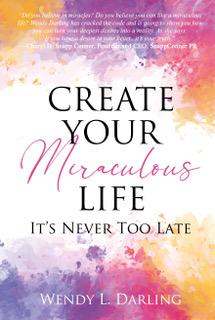
 Authors and Artists4 years ago
Authors and Artists4 years agoCreate Your Miraculous Life: It’s Never Too Late Wendy L. Darling
-

 People's Choice4 months ago
People's Choice4 months agoBollywood in August 2025: A Landscape of Sequels, Social Commentary, and Star Power

